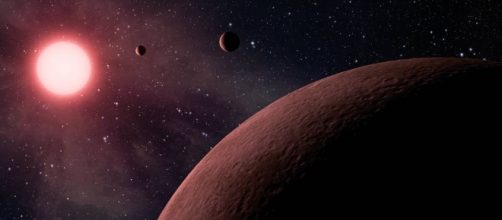NASA has announced the recent discovery of what is calls 219 planet-candidates thanks to ongoing analysis if observations of the Kepler Space Telescope. Of those possible planets, ten are thought to be rocky, near Earth-sized worlds that are in orbit around their home stars where liquid water could occur on their surface, meaning life could exist on them. Follow-up observations by ground-based telescopes will now seek to verify these newly discovered planet-candidates.
How many planets has Kepler discovered so far?
According to the space agency, Kepler has found 4,034 planet candidates of which 2335 have been verified.
50 near-Earth-sized planet candidates in the habitable zone orbits around their stars of which 30 have been confirmed. These planets reside in the Cygnus Constellation,
How does Kepler discover exoplanets?
The Kepler focuses on a star and notes the periodic dip in light that offices when a planet passes between it and the star. The space telescope can then ascertain the size of the planet and its orbital period. Once planet–candidates are detected then ground-based telescopes make follow-up observations to verify them and to further refine measurements of their size and orbital periods.
What types of planets has Kepler found?
About half of the worlds that Kepler has discovered are Jupiter-sized gas giants, some of which orbit remarkably close to their home stars.
The other half are Earth-sized rocky worlds up to 75 percent bigger than Earth. However, by a process that scientists do not yet understand, half of these worlds take on a small amount of hydrogen and helium in their atmospheres that swell them to near Neptune-sized.
What is the space telescope doing now?
Kepler is currently on an extended mission, observing a number of interesting astronomical objects. It recently discovered a solar system called Trappist-1 that has seven Earth-sized planets of which three reside in that star’s habitable zone. The system is about 40 light-years from Earth and lies in the constellation of Aquarius. The planets were verified by NASA's Spitzer Space Telescope, the TRAPPIST (Transiting Planets and Planetesimals Small Telescope) in Chile and other ground-based observatories.
What happens next for planet hunting?
The James Webb Space Telescope, scheduled for launch in 2018 and outfitted to make observations in the infrared range, as well as the WFIRST, scheduled for launch in the 2020s, could be tasked for planet hunting. Also, a number of very large ground-based telescopes planned also for the next decade, will be used to try to directly image exoplanets for the first time in history.


